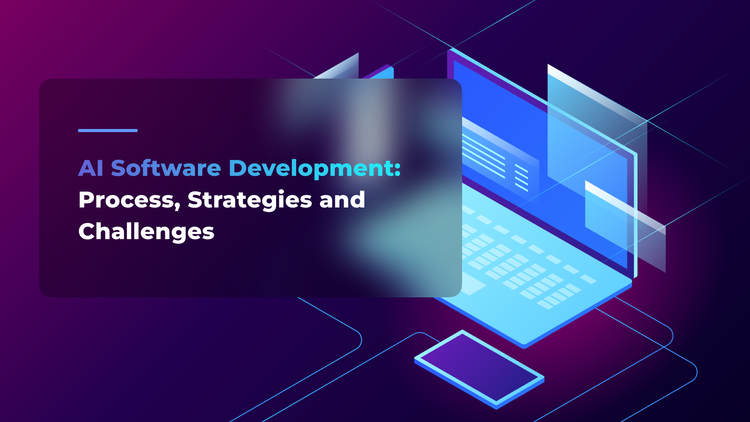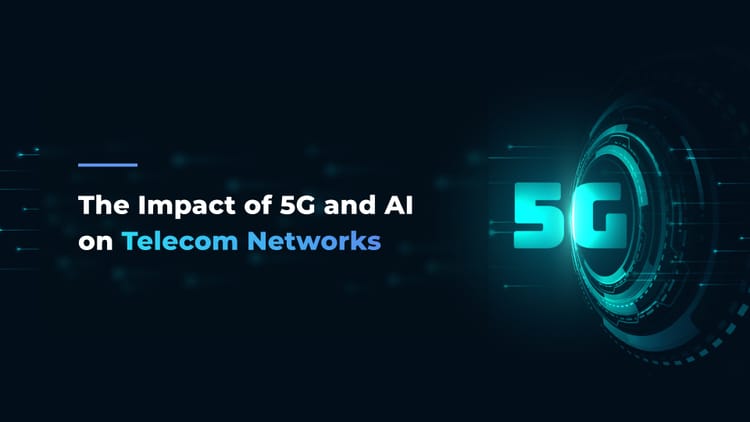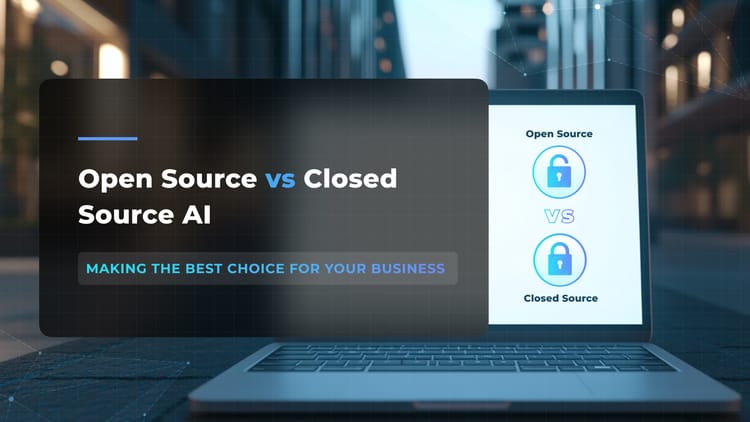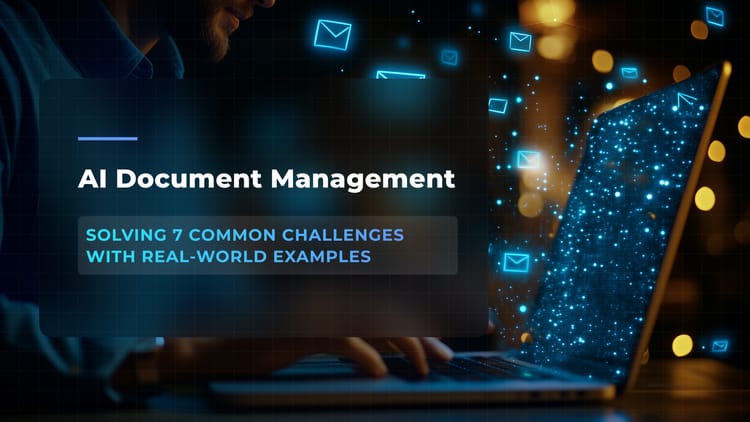AI SaaS in 2024: Your Guide to Developing a Powerful System
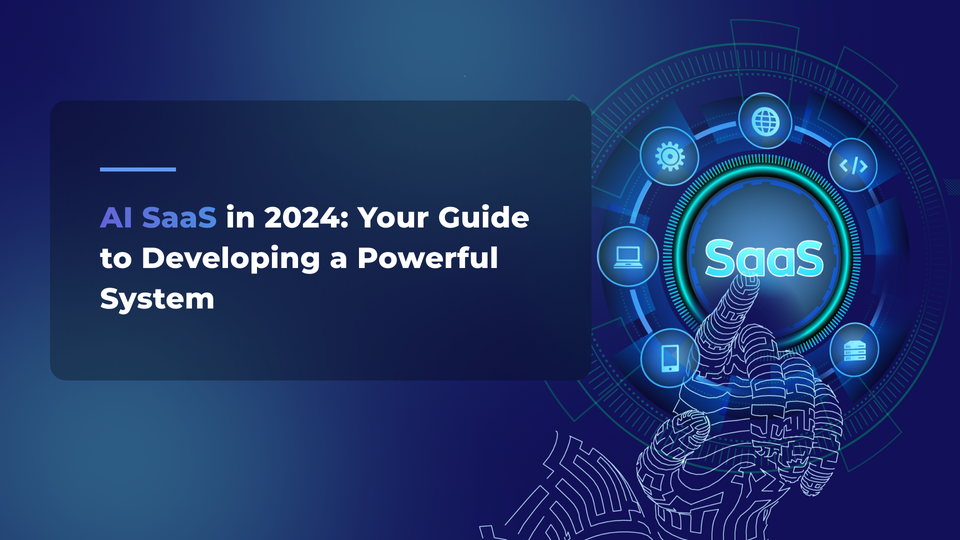
Artificial intelligence integration has shifted from novelty to necessity. With 82% of cloud companies leveraging AI-driven features, demand for advanced solutions keeps growing.
From streamlining workflows to delivering personalized user experiences, AI in SaaS boosts the overall value products provide. Companies using these capabilities see benefits from AI systems like stronger customer retention, improved efficiency, and higher revenue. For SaaS providers, the challenge isn’t whether to adopt AI but how to integrate it effectively to stay competitive.
At Flyaps, with over a decade of AI-focused software development experience, we’ve gained a lot of firsthand expertise incorporating AI in SaaS products. So in this article, we cover the steps of building an AI SaaS platform, and the common challenges companies often face during the process. Let’s start by exploring why SaaS companies are adding AI capabilities.
Why AI in SaaS is essential
Nearly every successful SaaS platform today integrates AI. Customers expect software that adapts to their needs, delivers personalized experiences, and improves efficiency. For SaaS companies, creating such AI systems is about meeting these expectations and staying relevant in a competitive market. The numbers back this up:
- 67% of SaaS companies say AI strengthens customer engagement and retention, leading directly to higher revenue.
- 80% of IT leaders recognize AI’s role in boosting productivity and operational efficiency.
The Future of SaaS Report respondents reveal that almost half (48%) of them believe AI's biggest advantage in SaaS lies in data collection. Meanwhile, 20% see scalability as the key benefit of AI in SaaS, while 16% each point to customer service and cybersecurity as crucial areas where AI makes an impact.
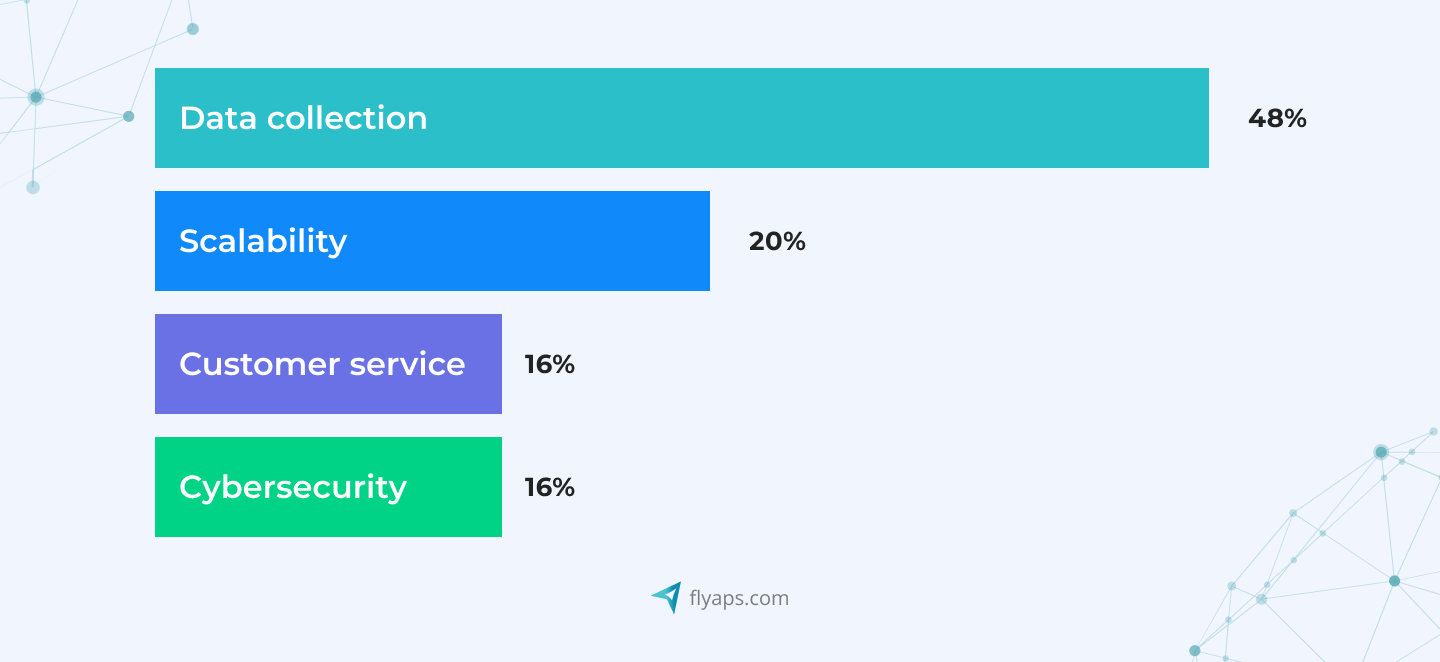
Real-world examples support these stats. Take Phrasee, which uses AI in SaaS to craft natural-language marketing copies. With AI, Phrasee generates millions of personalized marketing variations that resonate like human-written content. The result? Rapid growth, particularly in the retail and marketing sectors.

Let’s explore some more real-life cases of AI SaaS.
How SaaS companies use AI
To maximize AI in SaaS potential, it’s worth taking a closer look to examine how others are leveraging it. The wins, roadblocks, and creative breakthroughs of other businesses offers a goldmine of AI SaaS ideas you can adapt to reach your own goals. Here’s how top companies are using artificial intelligence:
Stripe: automating routine tasks
Stripe's developers used to spend hours sifting through technical documentation. Now, Stripe uses GPT-4 as a virtual assistant, instantly understanding client queries, finding answers, and providing concise explanations.

Duolingo: enhancing customer support with human-like chatbots
AI SaaS products thrive on user engagement, and Duolingo elevates this. With Max Roleplay, an AI-powered conversation feature, users practice real-world dialogues and receive instant feedback on mistakes, making it feel like interacting with a real person and keeping users engaged.

Grammarly: personalizing user experiences
Writing is deeply personal, and Grammarly knows this. That’s why they created GrammarlyGO, a tool that adapts to each user’s unique style, whether composing an email or drafting a presentation, making sure their message sounds just right.

Notion: simplifying search and navigation
Notion’s AI features streamline information retrieval. By understanding the context of users’ notes, it suggests relevant tags, making organization and searching more intuitive.

Let’s shift our focus to practical steps of developing an artificial intelligence SaaS.
AI can do more for your business—let’s find the best way to make it work for you. Check out our expertise and let’s discuss your next AI project.
See out AI servicesHow to build an AI-powered SaaS product
Imagine a company, offering solutions for financial organizations. They recognize the potential of AI in SaaS and decide to add artificial intelligence features to their financial automation platform. Let’s follow the company’s initial AI SaaS strategy.
- Selecting artificial intelligence SaaS features
These features must not only align with the company’s business goals but also effectively address customer pain points.
1.1. Understanding customer pain points
To uncover challenges AI can solve in the financial sector, the company conducts thorough market research, surveys, and interviews with financial professionals. This process helps them grasp the complexities and pain points customers face daily.
They use tools like the “pain and gain map” to track pain points and potential gains from AI features. This visual guide shapes their AI strategy in alignment with customer needs.
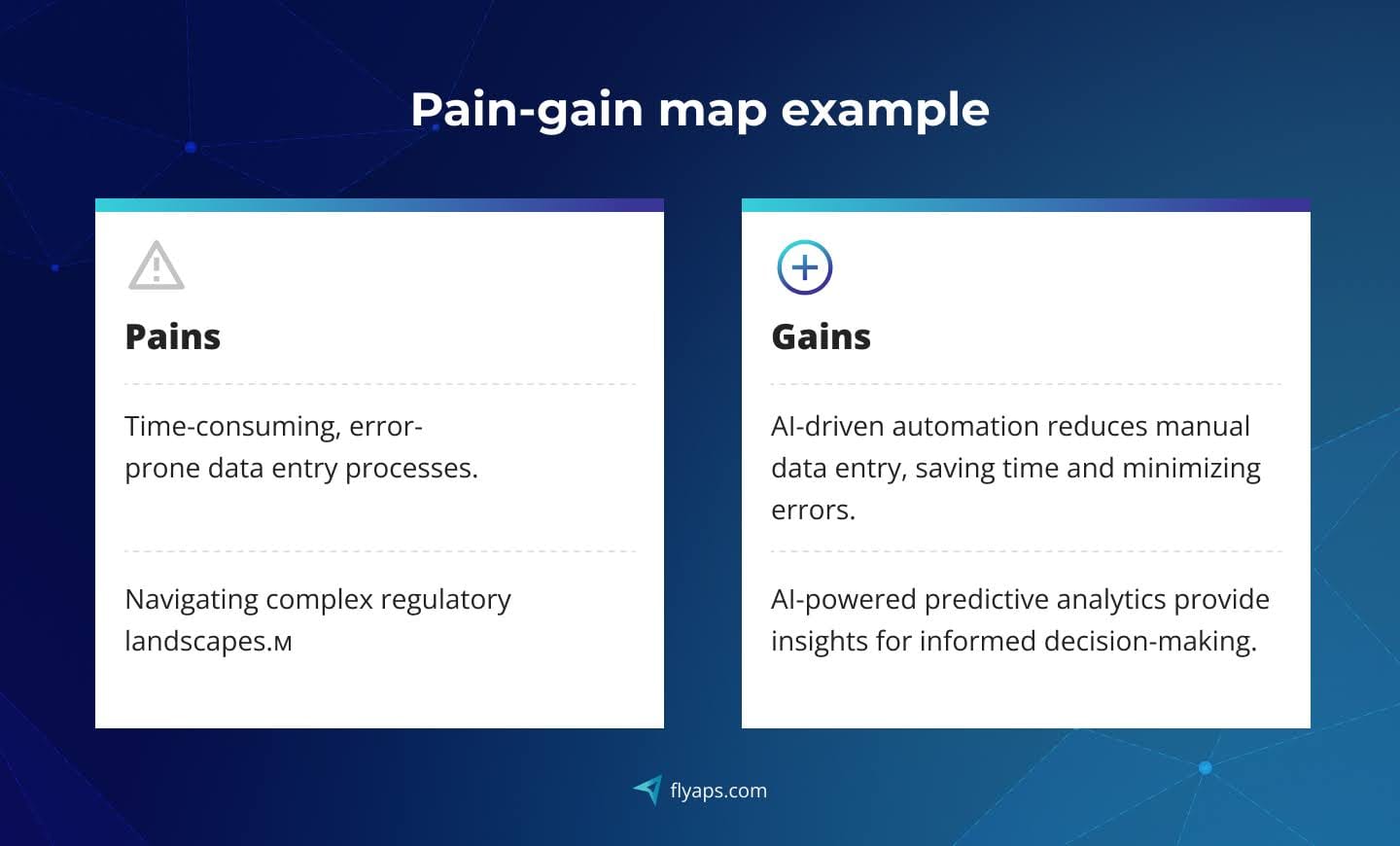
1.2. Evaluating each feature's impact
After identifying customer challenges, the company evaluates each potential AI feature. They consider how it can solve customers’ problems, boost efficiency, reduce costs, and improve the user experience. The goal isn’t to add features for innovation but to make a real and positive difference in the daily operations of financial professionals.
To measure the impact of these new features, the company sets up metrics for each feature in terms of revenue increase, improved customer satisfaction scores, and better operational efficiency. This data-driven approach highlights the role of AI for ROI, and ensures each AI feature bring clear and measurable benefits to people using the product.
1.3. Prioritizing features with the prioritization matrix
With a clear understanding of customer challenges, and feature impacts, the company now needs to decide which features are the most important. They use a "prioritization matrix," considering factors like customer appeal, technical feasibility, and market demand.
The matrix helps rank features based on these criteria, ensuring that the company focuses on the most impactful ones. This methodical approach ensures that selected features serve both customer needs and the company’s broader overall goals.
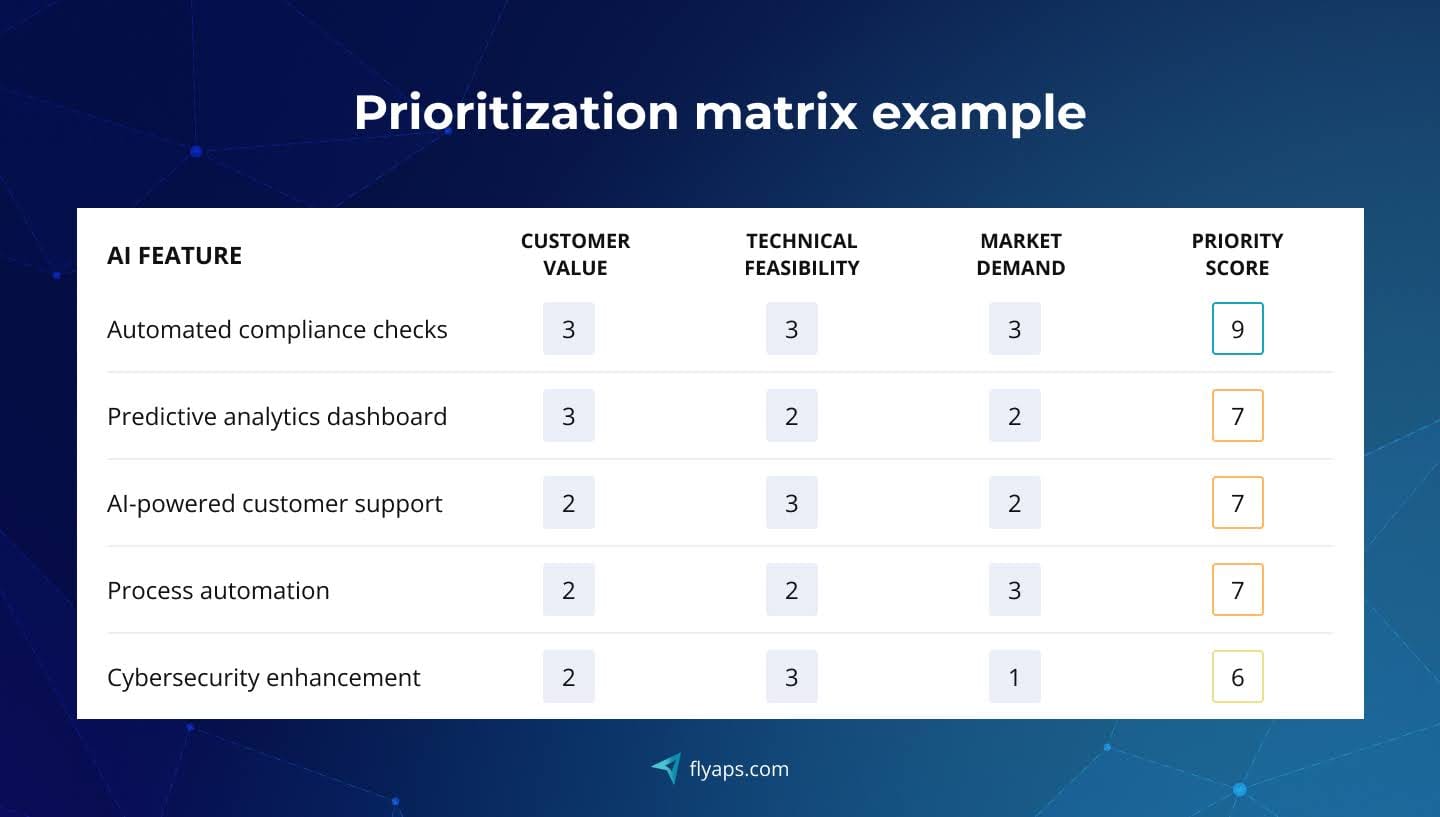
With a clear understanding of customer pain points and a prioritized list of impactful features, the company moves to the next phases of development. The goal is to ensure that every step, from initial data collection to final deployment, contributes to creating a powerful and user-friendly AI-powered SaaS product.
- Solution design
This phase sets the technical and strategic foundation for building the AI-powered SaaS product, ensuring it aligns with both business goals and technical feasibility.
2. 1. Data collection and preparation
The company dives into its existing resources — transaction histories, customer feedback, and workflow logs. By cleaning and organizing the data, they ensure their AI model has a solid foundation to learn from.
2.2. AI SaaS technology stack selection
Selecting the correct technology stack is a critical step when seamlessly incorporating AI features into a SaaS product. For successful implementation, SaaS providers take into account key factors such as scalability, compatibility with existing systems, and robust support for AI development frameworks.
Businesses have two main variants when integrating AI and ML into a SaaS product:
- If the product is built using a specific language or framework, such as Node.js, it may be best to stick with the existing setup. This will ensure compatibility and a smoother integration process.
- An alternative option is to code AI programs from scratch, especially if the current tech stack isn't optimized for AI. Python, a powerful language with excellent libraries and frameworks for AI and ML, is emerging as a popular choice. Adopting Python for AI development allows you to leverage its extensive ecosystem and community support.
To learn more on this topic, check out our detailed articles for a complete guide on picking the right AI tech stack and the best AI tools for developers.
2.3. Cost estimation
During this step, our fintech provider meticulously estimates how much does AI cost for implementing it into their SaaS platform. This involves assessing the expenses of utilizing cloud computing platforms, acquiring advanced AI and maschine learning development platforms and tools, calculating labor costs for the development team, and considering additional costs for hiring and administrative activities.
2.4. Prototyping and PoC development
This is where ideas are put to the test. The company started with a small-scale solution to automate invoice sorting — a task that eats up hours of manual labor. The prototype uses basic machine learning to categorize invoices by type.
Next, by running real client data through the prototype, the team evaluates its effectiveness. When errors appear, they tweak the model to make it smarter.
Let's say, that as a result, processing time drops by 60%, and accuracy improves noticeably. The team shares these results with stakeholders, proving the AI’s value with hard numbers.
- Developing a minimum viable product (MVP)
Now the company can create a minimum viable product (MVP). This isn't an advanced AI-powered SaaS product, but a basic version with only the most important features. It's like a quick way to get their enhanced financial platform out to the market.
The MVP for the company is a way to hear what users think in the real world. So, they give the MVP to financial professionals and collect feedback. It's a flexible approach that ensures AI features change and improve according to what people want.
That’s where we step in. Flyaps helps you launch an MVP in just three months. No wasted time, no unnecessary detours — just a fast-track to proving your AI concept works. We make it happen with 3 approaches:
- AI custom application development
Got exclusive data? We’ll work with your team to turn it into a custom AI product that gets more intuitive with use.
- Integrating external AI tools
Have universal data like social media insights? We can quickly integrate third-party tools, APIs, or open-source solutions to get you started.
- Pre-built AI solutions created by Flyaps
Our pre-built AI models are tailored to your industry, solving challenges quickly and cutting time-to-market.
- Planning a smooth AI integration
To make a minimum viable product and, further, the final AI SaaS product, the company should focus on seven key aspects that we are going to reveal.
User-centric design
The user interface (UI) is the first thing through which the user interacts with the platform. It must simplify the process of users adopting the product and it’s crucial for user satisfaction. Here are the five most important aspects our imaginary company should take care of:
- Clarity and simplicity
A simple design reduces cognitive load, making it easier for users to navigate and understand the interface.
- Consistency
Maintaining a uniform look and feel throughout the interface ensures that users can predict how elements will behave.
- Responsive design
Design for various devices and screen sizes to accommodate users accessing an AI-powered SaaS interface from different platforms. A responsive design results in a seamless experience regardless of the device users access your product from.
- Accessibility
To ensure this aspect, our fintech company should prioritize accessibility to make their AI SaaS interface usable by a diverse audience. They should also focus on readable fonts, color contrast, and alternative text for images to ensure inclusivity.
Right after the design phase, it’s time for our fintech provider to choose an Generative AI tech stack.
Cloud computing integration
As cloud computing is a core element of any SaaS, our fintech provider is considering the best way of integrating a managed cloud services platform.
Suppose the company's platform experiences a surge in user interactions during market fluctuations. In this scenario, integrated cloud services seamlessly scale resources, ensuring that real-time data processing and AI-driven insights remain swift and uninterrupted. This capability fosters a resilient and responsive financial advisory system.
Here's how the company can effectively integrate AI SaaS with cloud services:
1. Before integration, they conduct a thorough assessment of the infrastructure requirements and understand the computational and storage needs of the AI SaaS application.
2. They chose a cloud service provider among Amazon Web Services (AWS), Microsoft Azure, and Google Cloud Platform (GCP). The provider aligns with the company's business goals, offering essential tools and resources for AI development.
3. The company's tech team considered incorporating a Platform as a Service (PaaS) solution like Amazon's AWS Elastic Beanstalk. PaaS platforms simplify the management of various cloud components, encompassing infrastructure, networking, databases, and operating systems. For instance, AWS Elastic Beanstalk abstracts away the complexity of infrastructure management, enabling developers to focus on application development.
Leveraging cloud services provides scalability, flexibility, and cost-effectiveness. It allows seamless integration of AI functionalities without the need for extensive hardware investments.
Assembling a skilled development team
Bringing an experienced development team on board is key to seamlessly integrating AI into SaaS products. The team should include different roles, such as UI designers, AI/ML developers, web developers, QA testers, and DevOps engineers. They must grasp the intricacies of AI products and possess relevant expertise.
Speaking of a winning team with all types of tech specialists. At Flyaps, we've been assisting businesses globally in adopting the latest technologies, including AI. Our successful AI projects, such as the GlossaryTech Chrome extension used by industry giants like Amazon, Disney, Tesla, and Cisco, or the CV Compiler, a cutting-edge resume-parsing app, stand as testimony to the promising potential of AI.
Security prioritization
Safeguarding the wealth of user data entrusted is the top priority for our imaginary fintech provider. Therefore, their tech team initiated the process by addressing application security issues and fixing vulnerabilities like injection, cross-site scripting (XSS), broken authentication, and XML external entity (XXE).
To make sure only authorized users have access to their AI SaaS, the company adopted a multi-layered security approach. The tech team implemented robust authentication methods, such as multi-factor authentication and strict access controls. Sensitive data is protected through encryption – a digital vault with algorithms like TLS, ensuring its security both in storage and during transit. Additional digital security measures include a firewall to prevent unauthorized access and antivirus tools to scan for threats. They also rely on threat intelligence to identify potential hazards in the digital landscape.
The seamless integration of security and compliance testing is crucial, ensuring it is part of their overall testing process.
The last crucial step the company took here was working on the security of their application programming interfaces (APIs) that connect the project with external systems. To safeguard against unauthorized access and potential data breaches, the tech team implements secure API design and authentication mechanisms, such as API keys or tokens.
Comprehensive testing and review
Before deploying AI into a SaaS product, the team has to test and review it comprehensively. This involves subjecting the integrated AI components, data inputs, and the overall system to rigorous testing protocols. The goal is to identify and rectify any potential issues that might arise during or after the integration process.
Challenges and risks in SaaS AI integration
Adopting AI in SaaS comes with plenty of obstacles that SaaS companies need to address. From data collection hurdles to evolving regulations, integrating AI-powered tools into SaaS platforms require careful navigation.
Lots of data
AI-powered SaaS solutions rely heavily on vast amounts of information, but pulling that data from different sources and making it usable is a complex task. For SaaS businesses it’s not just about gathering the data; it’s also about building and maintaining the pipelines to move it around. Those data pipelines need to be reliable and scalable, which takes a lot of effort to get right.
Security
Employees often turn to generative AI tools without approval, creating “shadow AI” that sidesteps cybersecurity protocols. This can expose sensitive information (like customer data) and make businesses more vulnerable to attacks. At the same time, cybercriminals are weaponizing AI systems, crafting phishing scams and launching sophisticated attacks like prompt injection or data poisoning. Mitigating these risks requires not only strong security measures but also clearly defined generative AI roles within the organization to ensure responsible use and oversight.
SaaS providers must adopt cutting-edge AI technologies for real-time threat detection to protect their platforms from these potential threats.
Infrastructure
AI workloads are unpredictable, with demand spiking unexpectedly. AI SaaS providers need infrastructure that can handle these fluctuations without wasting resources on systems that sit idle most of the time. It’s a tough balancing act, and mistakes can lead to slow performance or inflated costs.
Bias
When machine learning algorithms are trained on unbalanced data, the outcomes can be skewed, leading to unfair or inaccurate results. For instance, in customer relationship management (CRM), predictive analytics might misinterpret patterns in user behavior, leading to decisions that alienate certain customer groups.
Ever-changing regulatory landscape
Laws like the EU’s AI Act and California’s AI Privacy Rule are forcing SaaS providers to rethink how they handle AI. Staying compliant isn’t optional — failing to do so can lead to fines, legal trouble, or lost customer trust.
Overcoming artificial intelligence SaaS challenges: Flyaps experience
With over a decade in the software development field, we have a lot of expertise in mitigating all kinds of risks and challenges. Here’s one of the SaaS examples.
Our client, an HR tech company, wanted to solve a persistent problem for job seekers in the tech industry. Too many talented professionals were overlooked due to poorly formatted or suboptimal resumes. To address this, the company launched CV Compiler, a tool that analyzes and improves resumes using machine learning. Flyaps stepped in to build the backend infrastructure that would power this game-changing platform.
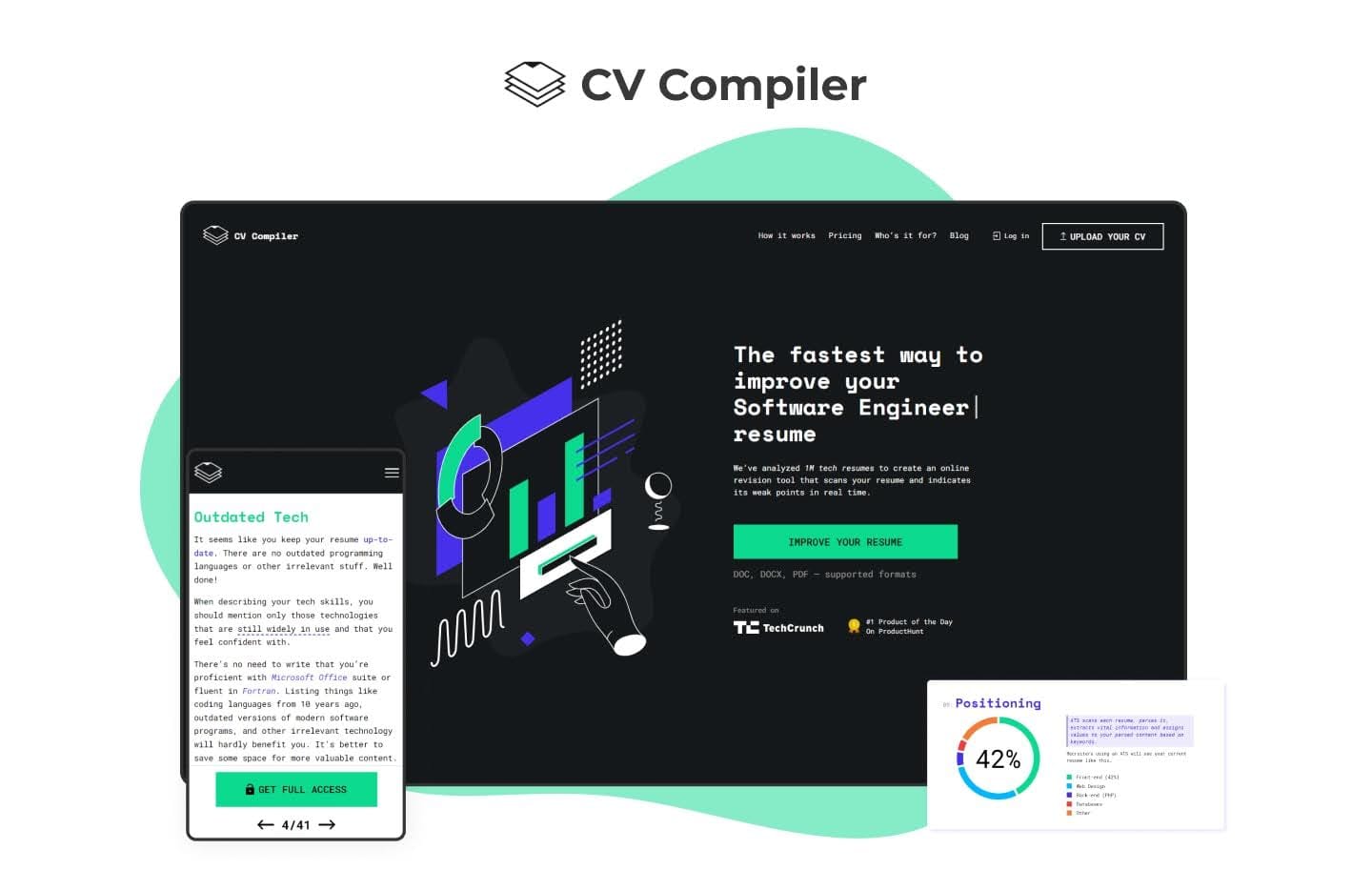
Building for scale
The platform needed to serve both individual users refining their resumes and enterprise clients with large-scale parsing needs. The infrastructure had to handle unpredictable loads without compromising speed or reliability.
Our solution was to design a distributed, cloud-native system. This modular architecture allowed independent updates without disrupting performance, making it scalable and robust enough for diverse generative AI use cases.
Parsing the unstructured formats
Resumes often arrive in PDFs — a notoriously inconsistent format. They include tables, images, and text encoded in ways that can throw algorithms off track.
Our solution: we combined specialized text extraction libraries with machine learning models. This setup reliably handled diverse formats and ensured accurate resume analysis.
Moving beyond third-party APIs
CV Compiler initially relied on an external parsing service, but it wasn’t a perfect fit. The API struggled with technical terms, operated slowly, and came with a hefty price tag.
Our solution: we created a custom neural network that improved parsing accuracy, sped up processing to under two seconds, and reduced costs by removing the dependency on external services.
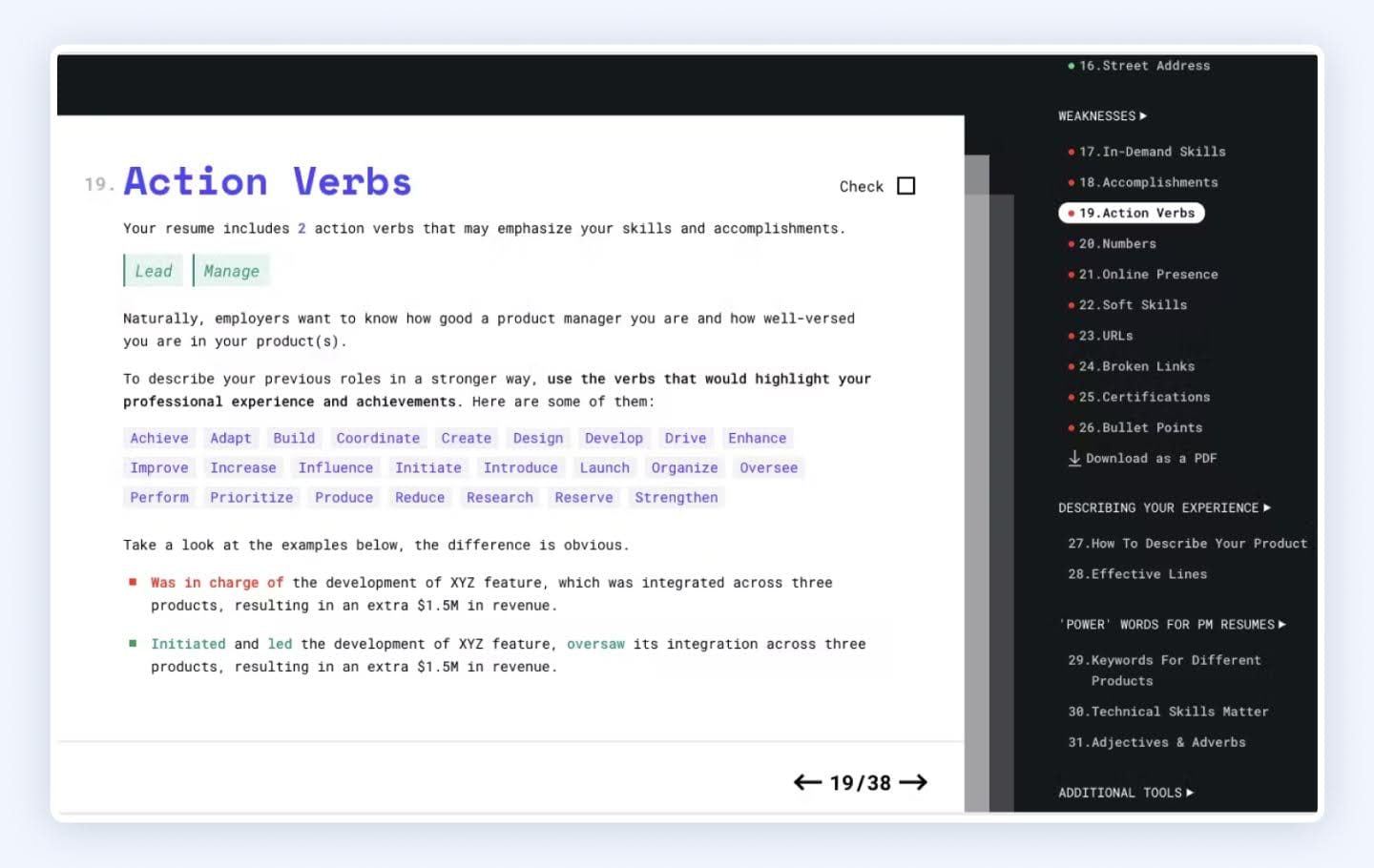
As a result, we delivered a flexible, scalable solution that has revolutionized how tech resumes are improved. CV Compiler now supports over 50,000 IT professionals, helping them stand out in competitive job markets. It also serves global recruitment companies like Indeed, offering custom resume analysis tools tailored to their needs.
Final thoughts
Whether AI in SaaS is helping businesses connect better with their customers or automating tricky processes, it is reshaping what SaaS can achieve. But here’s the catch: success with AI doesn’t come from using it just because of its novelty. It’s about integrating it thoughtfully to solve real problems and make a tangible difference for users.
As you take the plunge into building AI-powered SaaS products, focus on what really matters: understanding your users’ needs, planning strategically, and delivering features that truly add value.
Still have questions about creating an AI-powered SaaS platform or adding AI features to your existing SaaS products? We're here to help! Just reach out to us, share the details of your project, and we'll come up with a solution tailored to your specific needs. Let's chat!
AI can do more for your business—let’s find the best way to make it work for you. Check out our expertise and let’s discuss your next AI project.
See out AI services

